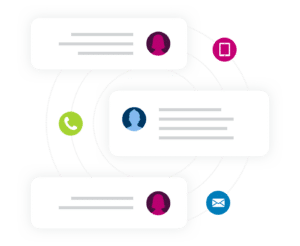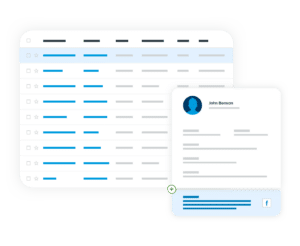How to Combat the Great Customer Resignation
Customer acquisition is costly. It takes time and considerable effort and requires significant expertise. It makes sense to keep your existing customers happy as the cost of churn is so high. New research from SugarCRM reveals that almost two-thirds (63%) of sales and marketing leaders agree that keeping existing customers is more cost-effective than closing a new deal. Yet, despite the cost of churn, 51% surveyed admitted they don’t understand the reasons for churn, and 57% struggled to quantify and track churn rates effectively.
The Great Customer Resignation is upon us. In the wake of pandemic-related forces such as supply chain disruption and employee resignations, shortages in essential resources have led to staff burnout and the organization’s inability to catch up with or meet customer expectations. Essentially, businesses have struggled to create better CX against heightened customer frustration.

Addressing customer churn in the post-pandemic world is a mission-critical activity for sales and marketing leaders. While some churn is inevitable, businesses must arm themselves with the tools to best prepare for and manage attrition.
Revisit Your Customer’s Journey
Knowing your customer has always been important. But the pandemic has created new consumer behaviors and profiles, forcing many brands to make business model changes. The more you know about your customers, the easier it is to create a high-definition customer experience (HD-CX) across marketing, sales, and service.
Deloitte says brands should seize this opportunity to revisit customer loyalty strategies and remove friction points in the customer journey. Brands that don’t evolve will quickly learn it’s tough to keep a customer if their experiences don’t match their renewed expectations.
A unified view of sales, marketing, and service is critical for identifying gaps between customers’ expectations and what they actually experience. Customers don’t deal with companies, they deal with people, often across multiple channels. Collaboration between customer-facing teams is more critical than before. You must regularly audit your customers’ wants and needs to create an HD-CX.

Reassess Your Toolkit
A consolidated view of customer information across the organization is critical to delivering an HD-CX. Yet, most businesses say they don’t have the data they need to maximize the success of marketing campaigns and sales conversions. One of the most significant issues they face is losing a quarter of sales because the customer received zero follow-ups.
Creating an HD-CX involves digitally transforming your business and empowering your employees with technology that helps them delight your customers and deliver an excellent customer experience. Artificial intelligence (AI) is a powerful tool as it lets you analyze and draw insights from massive volumes of data quickly. This complements your team’s skills to make better decisions and anticipate customer needs. Follow-ups aren’t missed because your team is ready to meet the customer where they are in their journey.
Data Is the Key to HD-CX
Creating an amazing experience for customers requires a bird’s eye view of relevant data, establishing mutual goals and metrics, and creating a seamless handoff process to improve productivity and ensure ownership. That data can come from internal sources such as your sales system, finance and be complemented by data from external sources. When you understand every step of the customer journey, from their first inquiry to support, you can transform operations to become customer-centric. The intelligent use of technology enables you to optimize and personalize customer engagement.

Marketing and sales leaders understand that a unified view of sales, marketing, and services is critical to delivering an HD-CX. When these three pillars of CX are in harmony, the customer wins. Operational silos are inefficient and make life harder for sales, marketing, and support teams. More importantly, they make life harder for customers. And when customers encounter friction, they will start looking at your competitors. Great data accessed from a single source lets you take a proverbial sledgehammer to the walls between your teams.
The key is high quality data that is easily accessed from a central system and allows teams to see a complete view of the customer. That system can leverage tools such as AI to fuel actionable insights that sales, marketing, and service teams can use to act decisively at every critical touchpoint.
When you anticipate and meet your customer’s needs, the Great Customer Resignation can be transformed into the Great Customer Opportunity.
This blog post was initially published on B&T.



